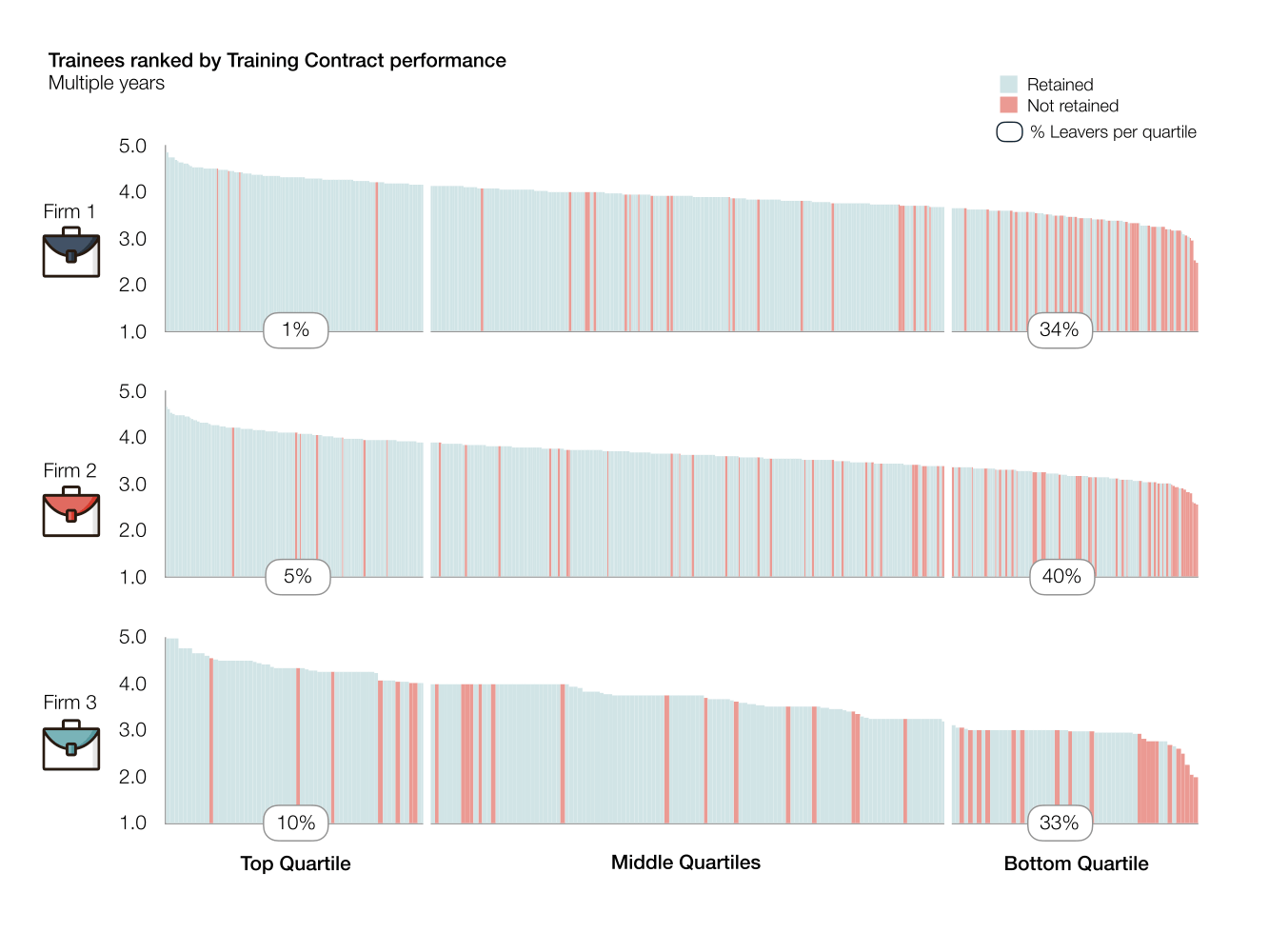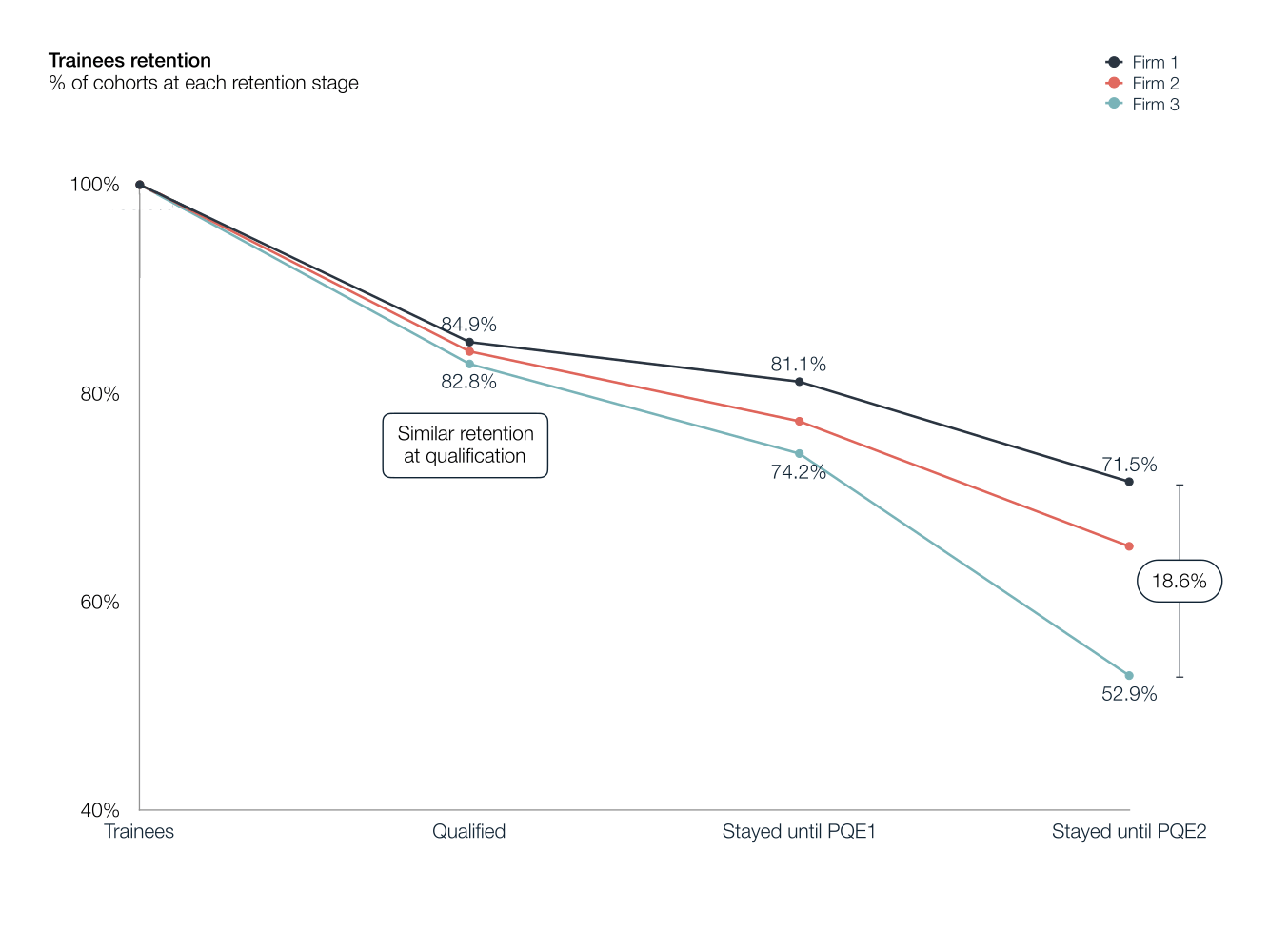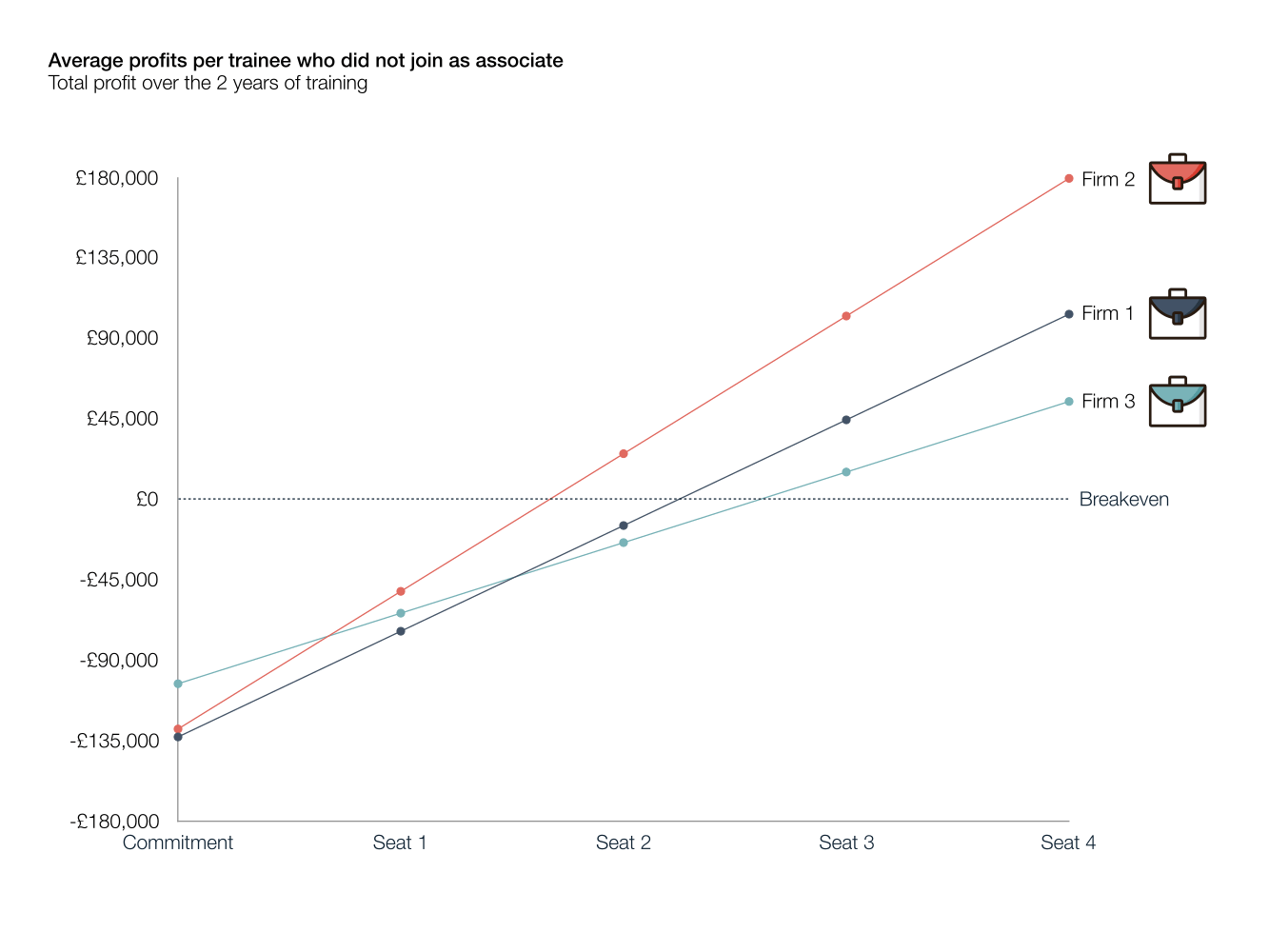Are Trainee Lawyers A Burden? A Business Perspective
This article originally appeared in The Lawyer .
Law firms need trainees like a society needs children. Yet in an era of increased lateral movement of associates and partners, the importance of a firm’s homegrown talent is often underestimated. Successfully recruiting and retaining trainees is a key factor in a firm’s success, not only in financial terms, but also when it comes to building a home-grown cohort of new company leaders.
There is a certain hesitation in the market when it comes to trainees. It’s widely believed that trainee retention rates are critical and a measure of success, and also, that trainees are a long-term investment - that they only pay off in the long term. It’s also a common gripe that coordinating trainee placement is a big logistical challenge.
Upon investigation, however, a lot of these myths do not hold water. A data analysis by Pirical , a UK Legal Technology company, reviewed 4 to 7 years of trainee performance data across multiple law firms, and found that trainees are not the drain on firm resources they are commonly perceived to be, and that there are smarter ways to incorporate trainees into the business.
What the data tells us
Pirical selected 3 firms from their analysis to demonstrate the disparity between belief and reality regarding trainees. During the training process, these law firms did performance evaluations for trainees, which were then split into quartiles and highlighted those that did not stay post-qualification.
Figure 1: Trainees ranked by their performance, overlaid with attrition

Myth 1: Low trainee retention rates are bad
There is a widespread belief that losing trainees is bad for the business. It depends though, on which trainees are leaving.
As you can see in Figure 1, each firm lost only a relatively small percentage of their top performing trainees. Meanwhile, on the opposite end of the spectrum, all firms lost between 33% and 40% of their bottom quartile trainees on qualification.
This means a significant number of relatively poor performers selected themselves out of the talent pool, while very few of the best performers were the ones who dropped out. These results belie the often-voiced concern that trainee attrition is bad.
As an aside, an interesting picture emerges when you look at retention rates beyond the trainee stage. Overall retention rates achieved on qualification were broadly similar across the 3 firms, however retention rates from NQ through to PQE 2 showed much more disparity (Figure 2).
Figure 2: Retention of Trainees

Myth 2: Trainees, especially those who are not retained, cost the firm a lot of money
Many legal professionals voice their displeasure that the investment made in trainees is wasted when they decide to leave post-qualification.
However, the data shows that while trainees indeed require significant investment, this investment starts paying off much faster than is commonly assumed. Pirical’ number-crunchers have shown that, on average, trainees become profitable around Seat 2 - in other words, one year into their traineeship. This is seen in Figure 3.
Figure 3: Average profits of Trainees who were not retained

How to read this graph: Each dot represents the cumulative return-on-investment on a firm’s trainee at any given moment. For example, each trainee at Firm 2 who was not retained once they had reached Seat 1, had cost the firm a net cost of ~£50,000. Once they had reached Seat 2, however, they had made the firm a net profit of ~£25,000.
Furthermore, this analysis only includes trainees who were not retained at qualification. Keeping in mind that unretained trainees tend to come from the lower performance quartile, the average profitability of trainees is higher yet.
Far from a drain, as long as a firm has sufficient work, hiring more trainees may be a solution to higher profitability.
Myth 3: Allocating trainees to their seats is an unsolvable logistical nightmare, causing trainees to leave
Balancing trainees’ seat wishes with a firm’s staffing needs, as well as the regulatory requirements on top, is cause of much frustration and premature hair-greying in the legal sector.
However, this is an area where new Algorithmic technology can dramatically ease the burden. Running everyone’s requirements through an optimisation algorithm can quickly suggest possible solutions. These can then be reviewed and adjusted to account for personal circumstances and other nuances, reaching a far tidier result than the man-hour-heavy process it would otherwise require. Using Ruth , firms can achieve up to 44% more trainees receiving their 1st preference for seats compared to manual allocations, resulting in happier trainees.
Conclusion
The news that trainees are indeed more profitable than firms often realise, and that their drop-out rates post qualification are only high in the bottom performance quartile, should be a source of good cheer for all law firms who undergo the often thankless task of raising the next generation of legal talent. It just goes to show - when making decisions based on conventional wisdom, is always worth pausing and analysing the data at hand.
If you would like to get started with this analysis in your firm, get in touch — it’s what we do best.
Subscribe to the latest data insights & blog updates
Fresh, original content for Law Firms and Legal Recruiters interested in data, diversity & inclusion, legal market insights, recruitment, and legal practice management.







